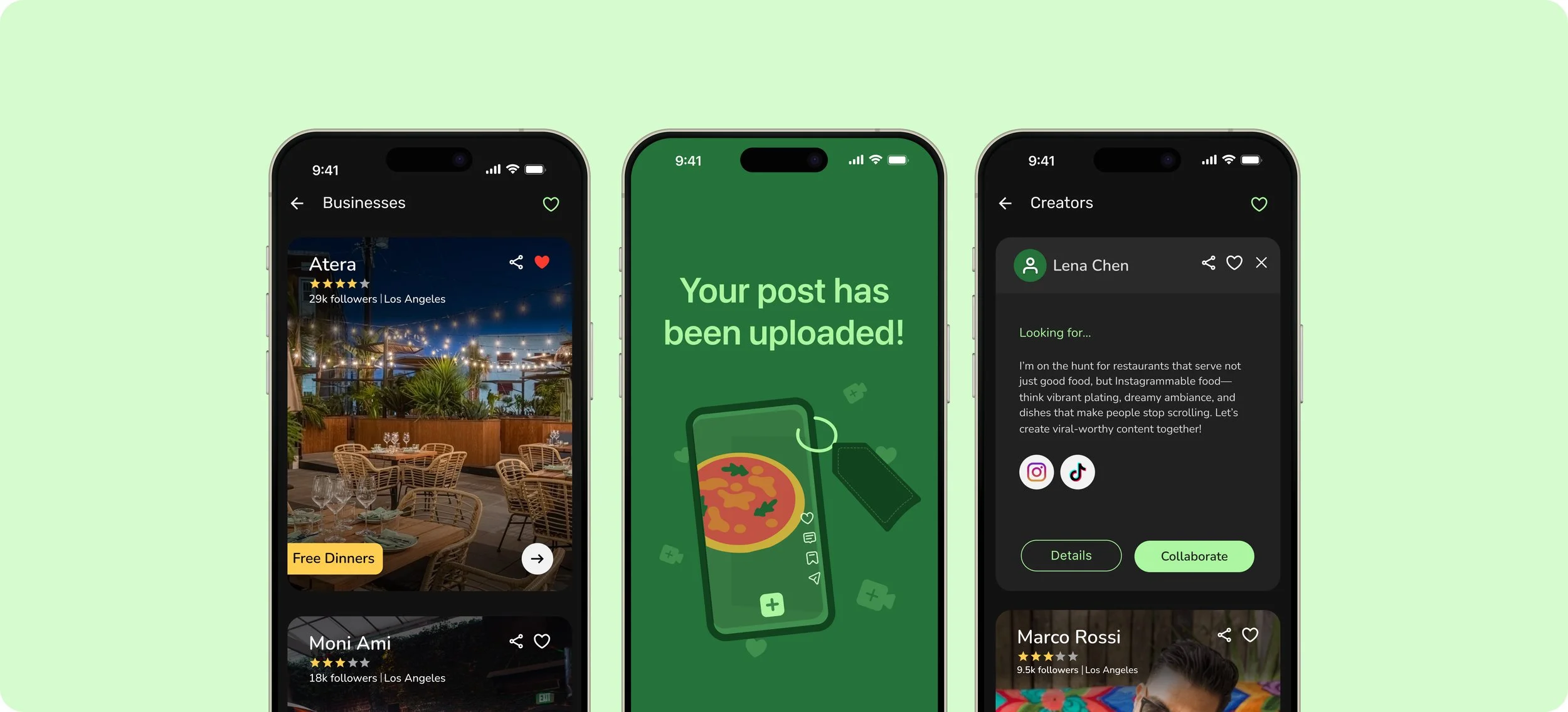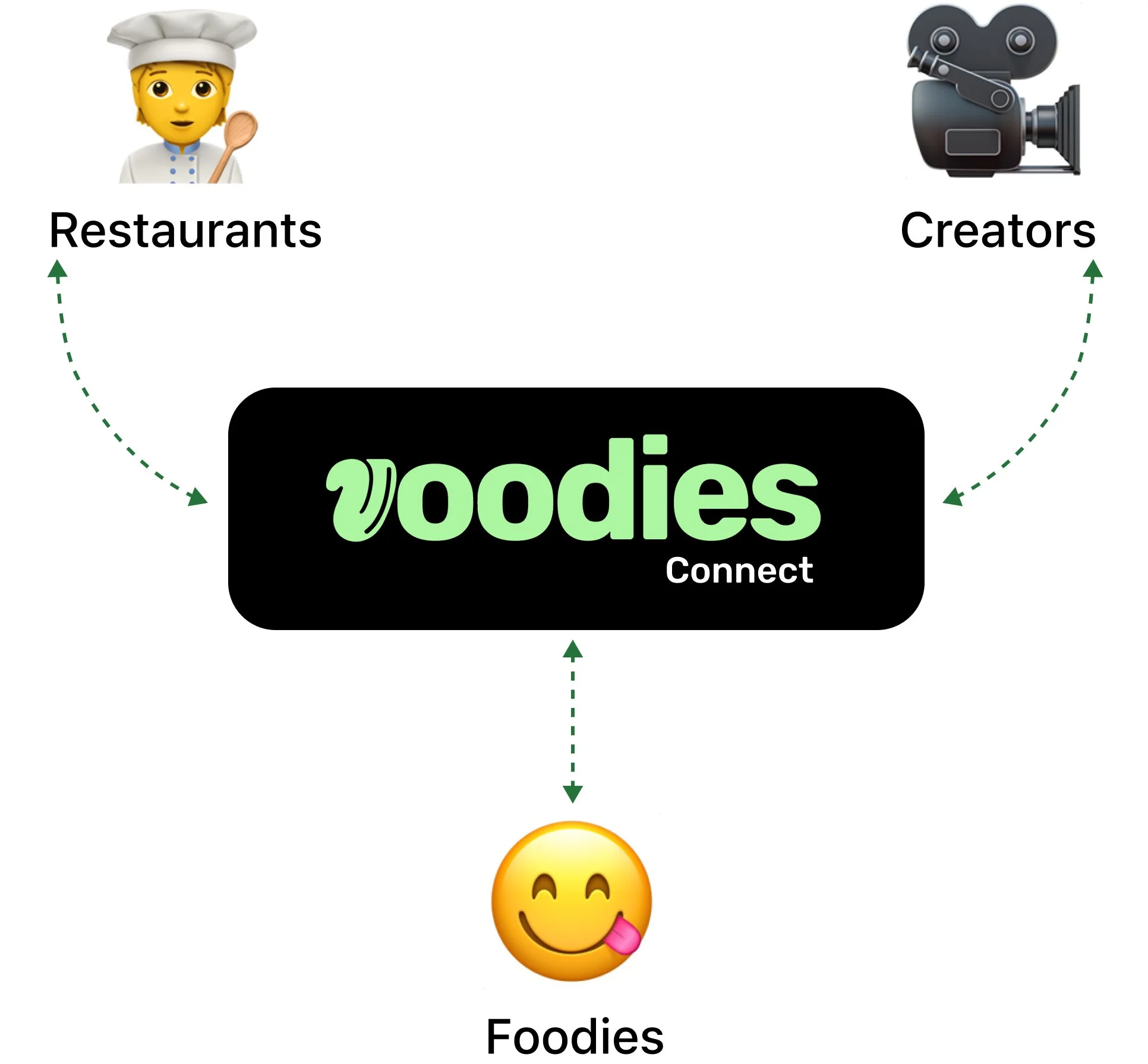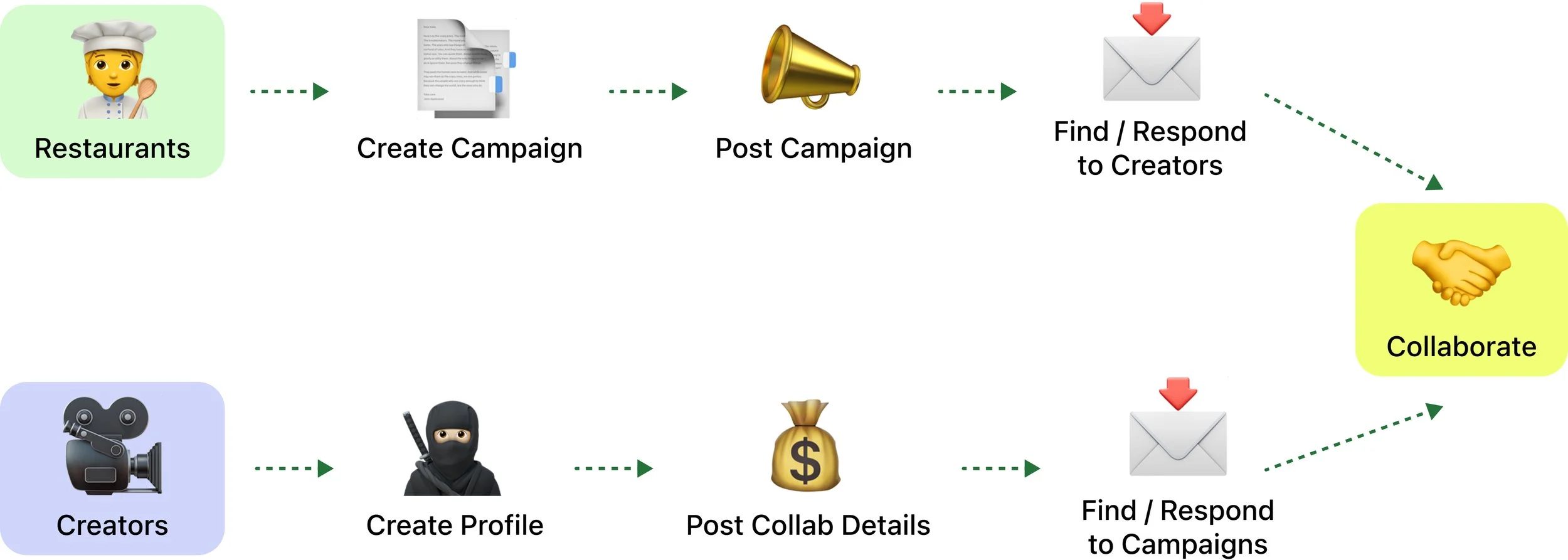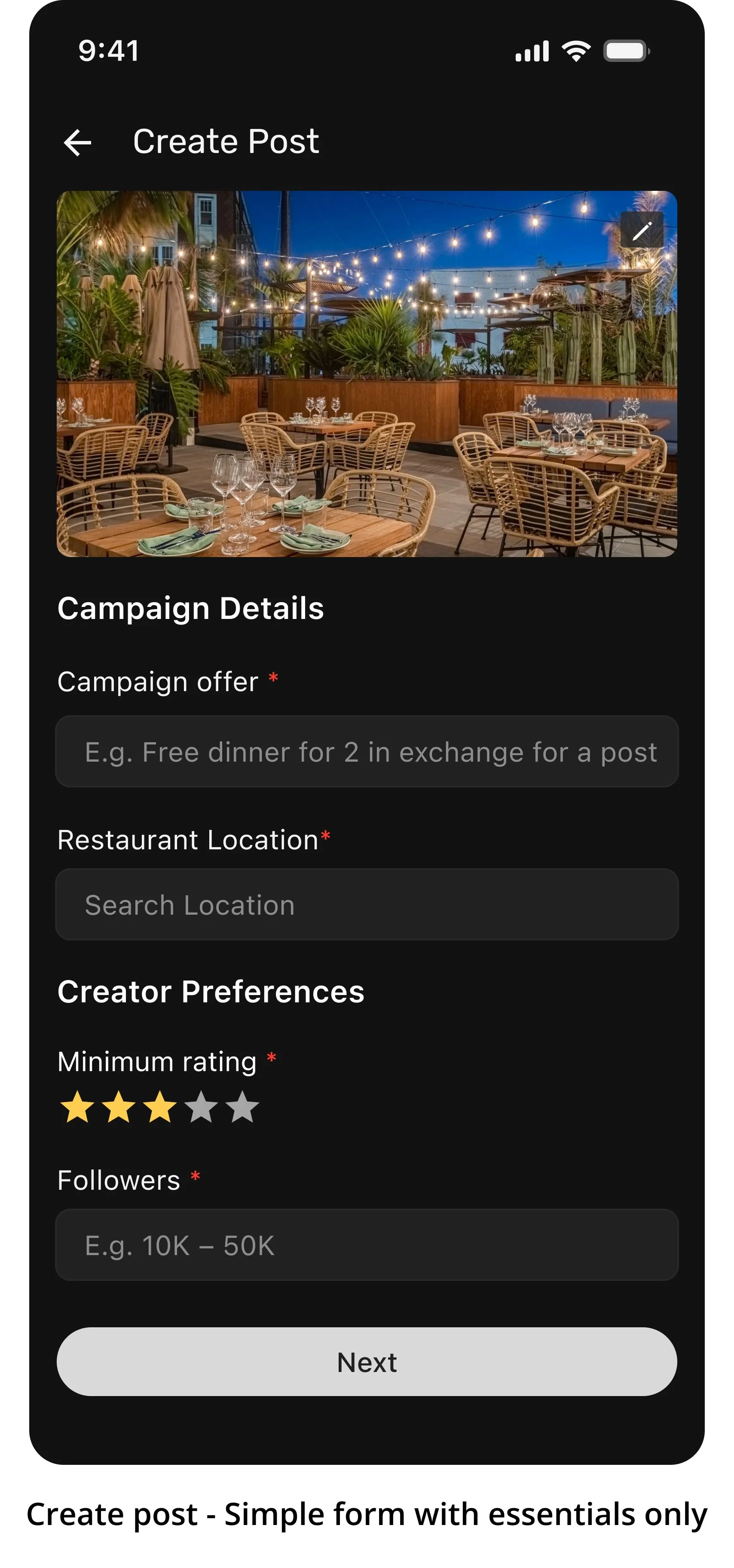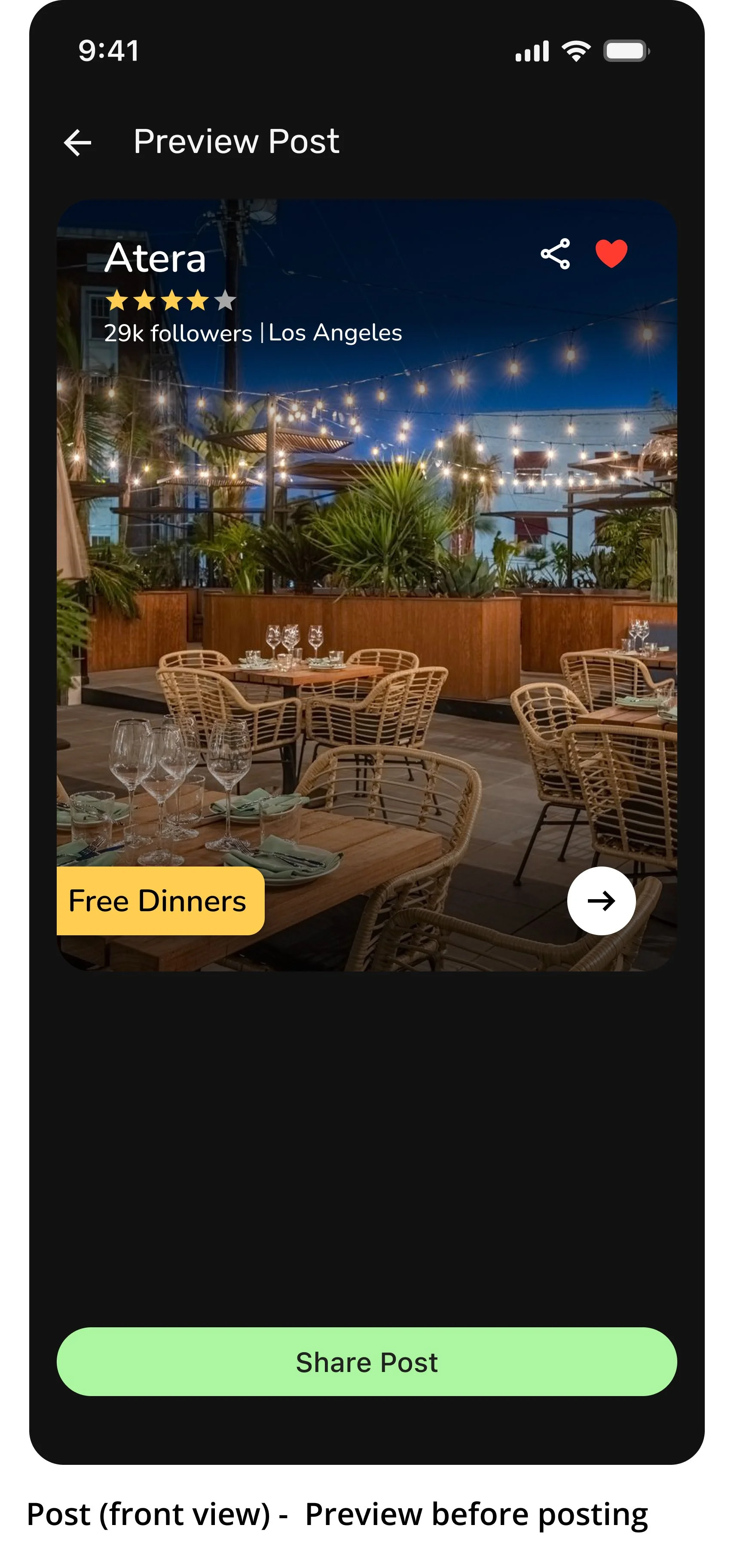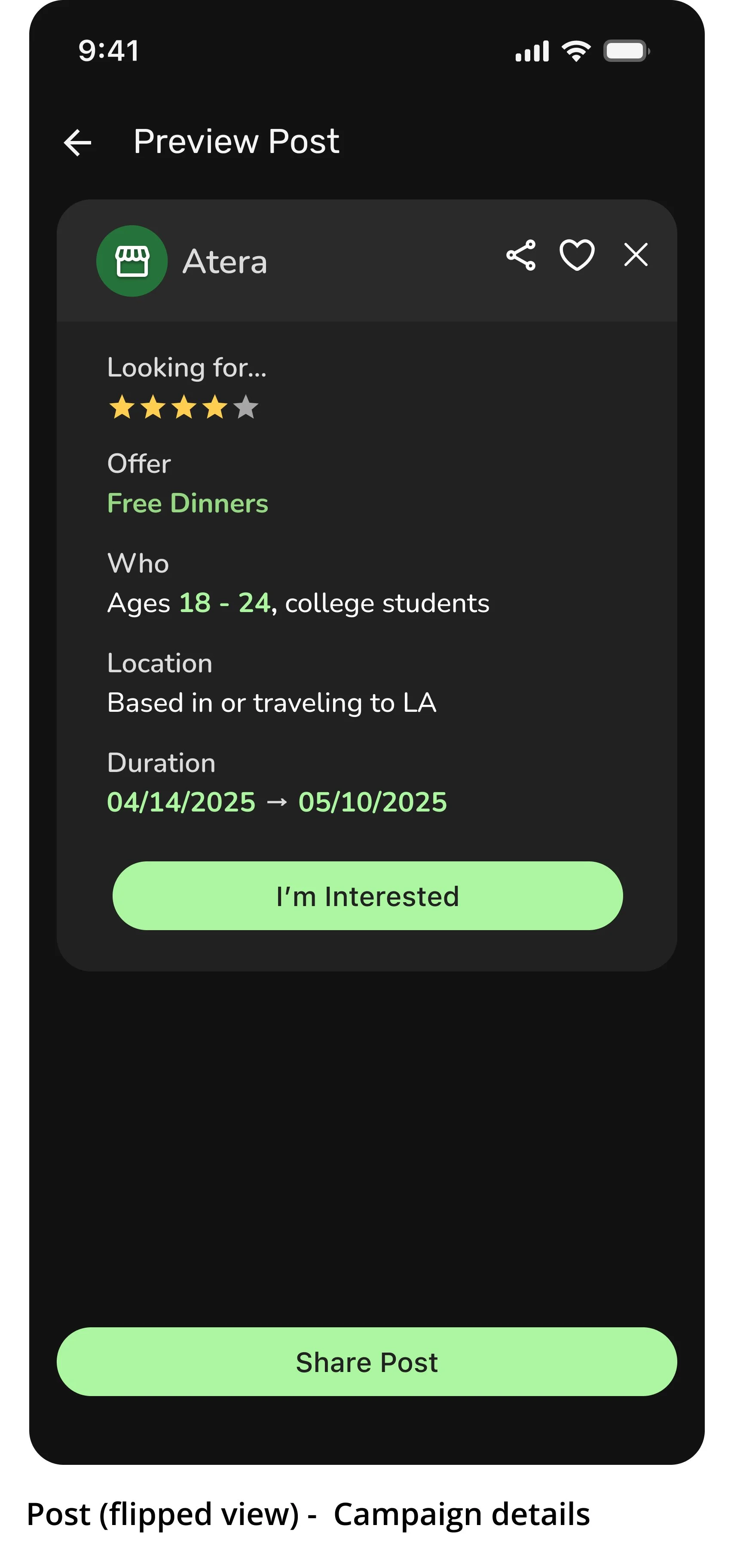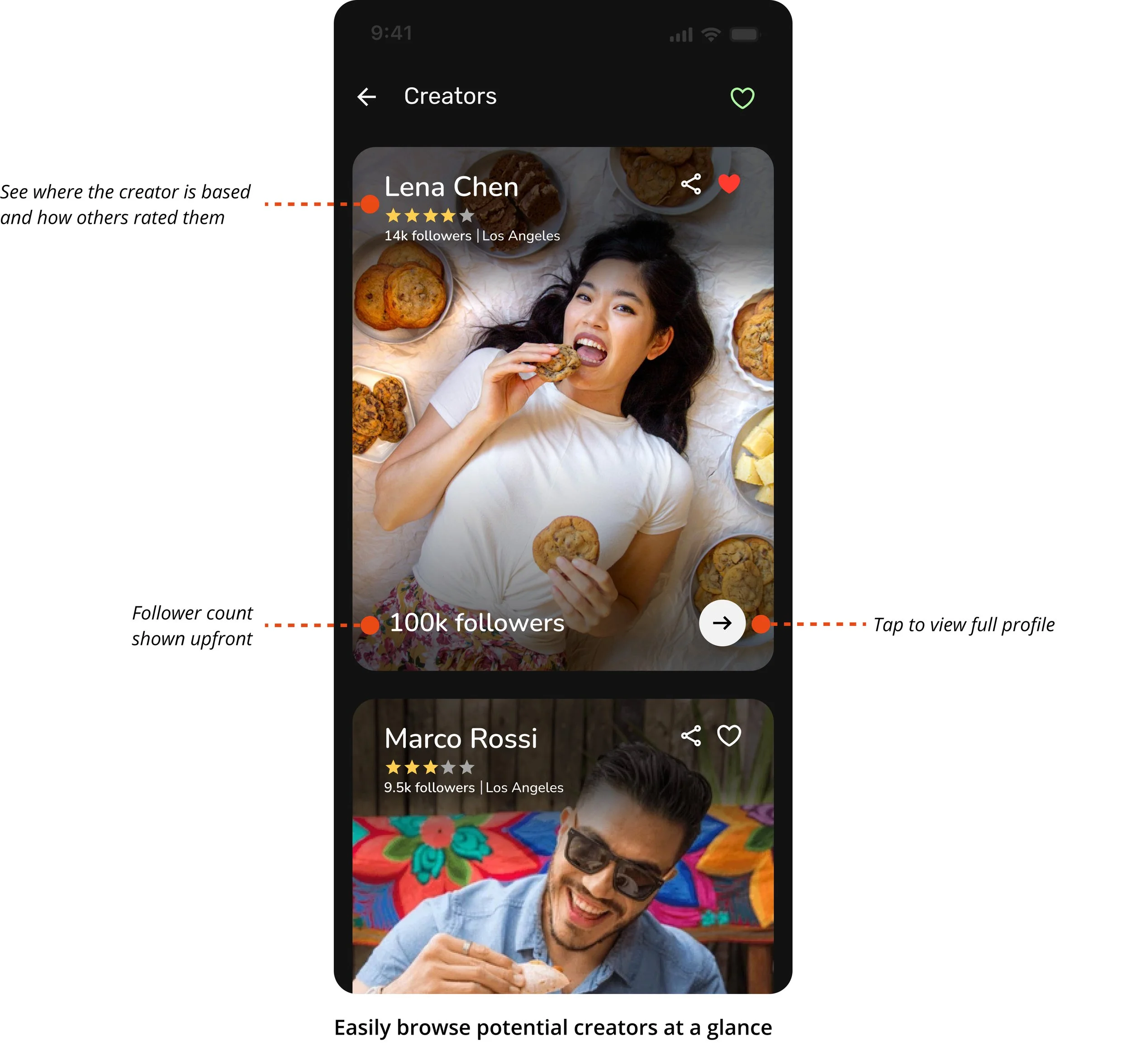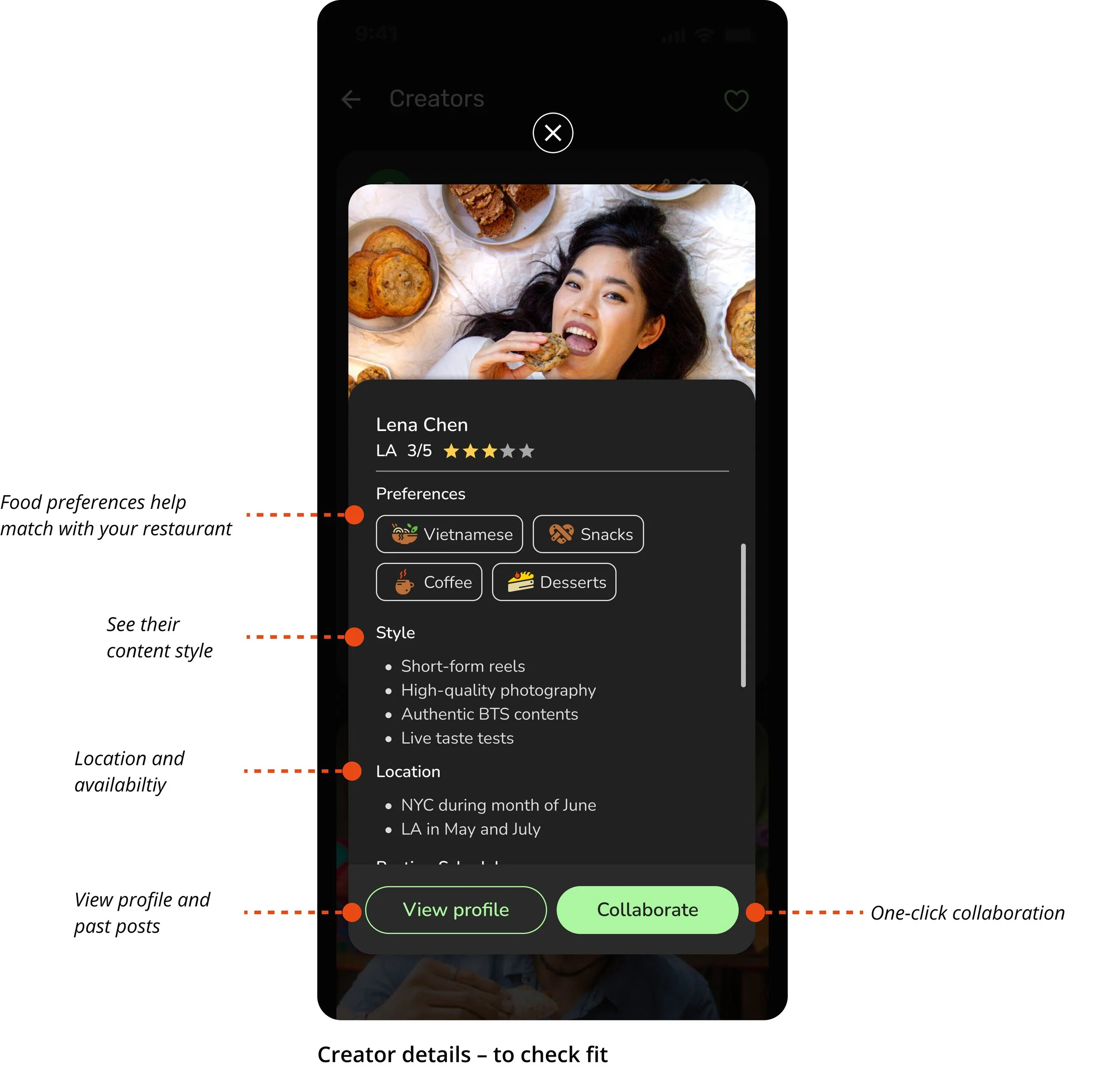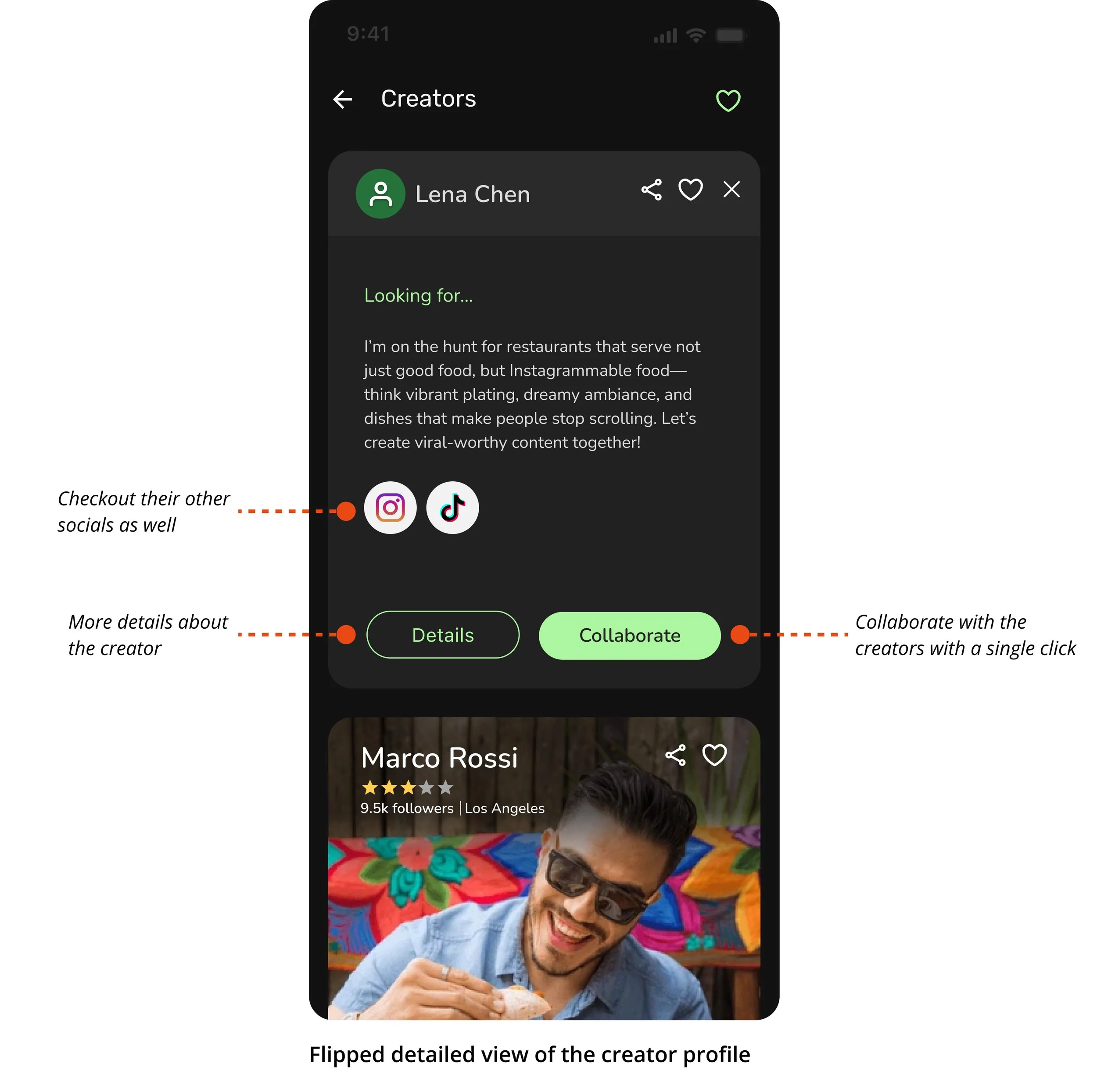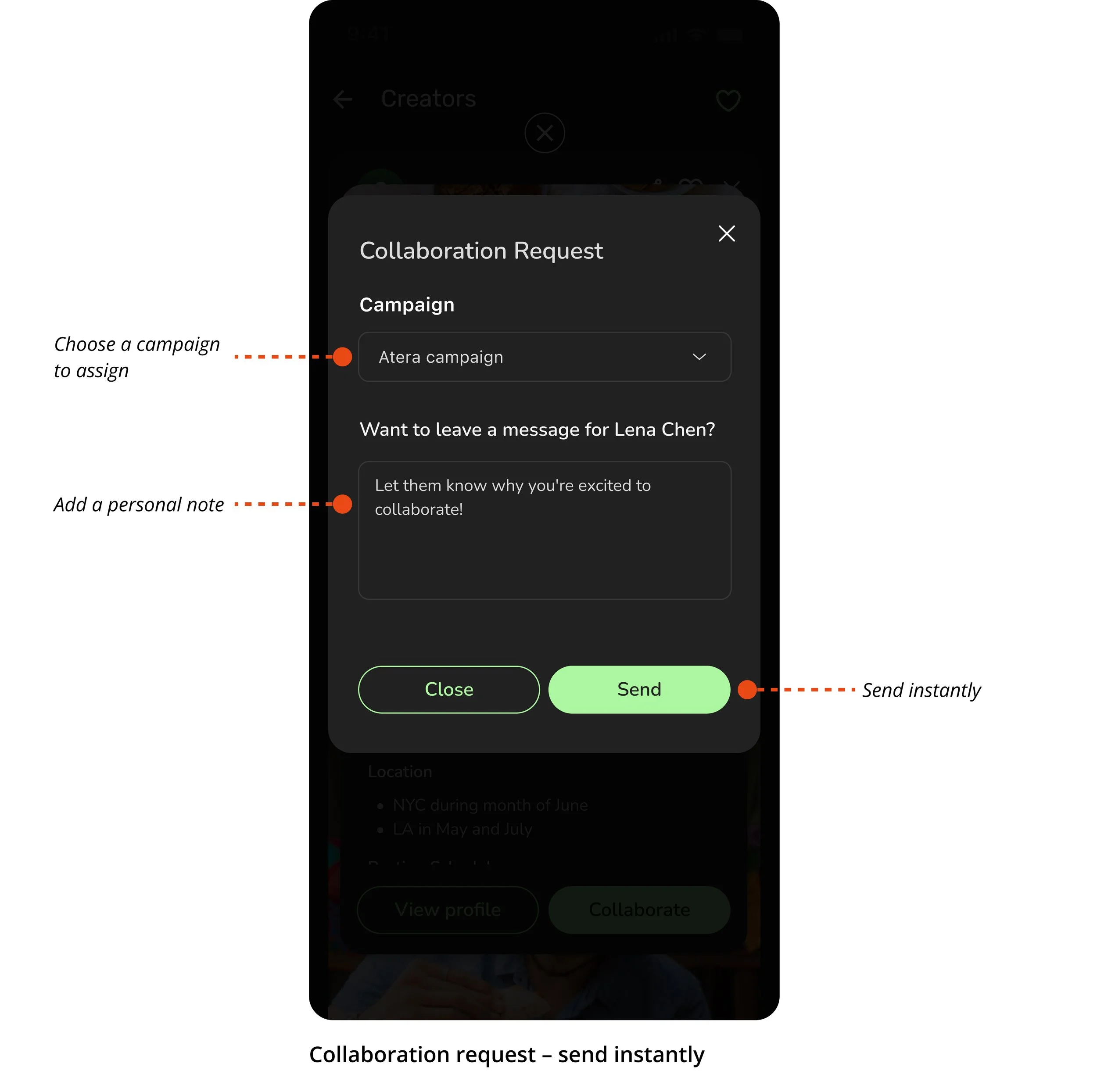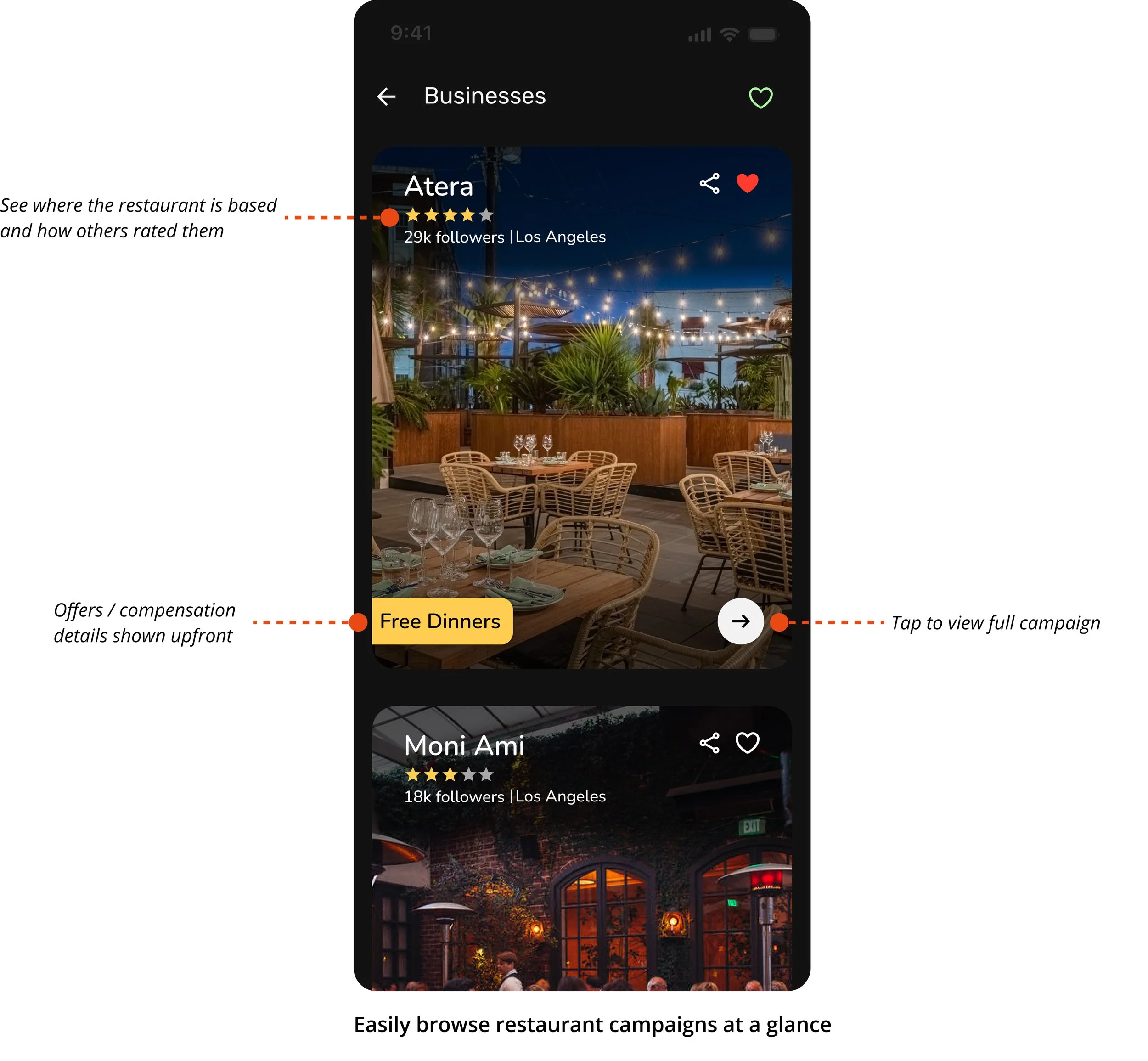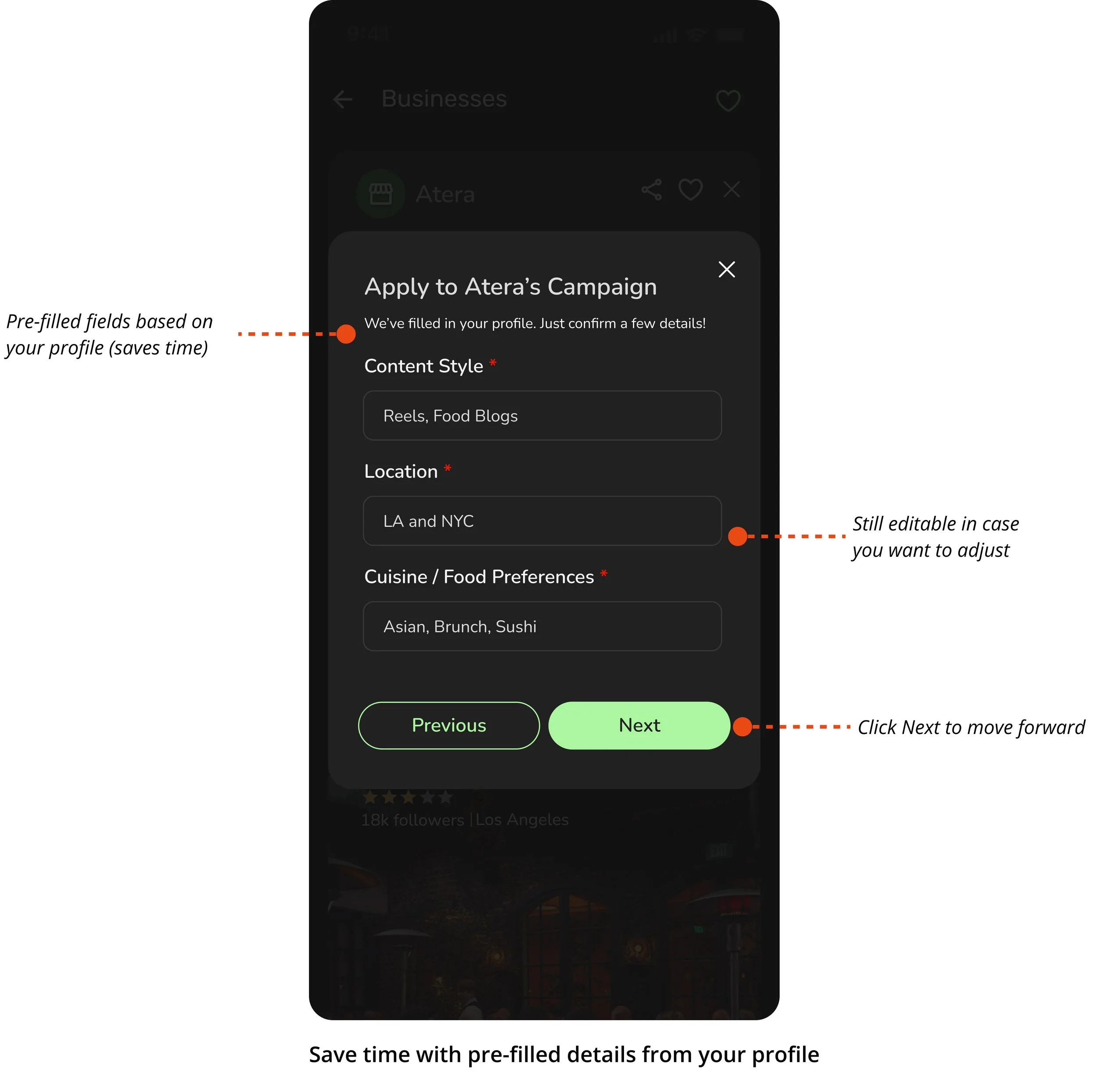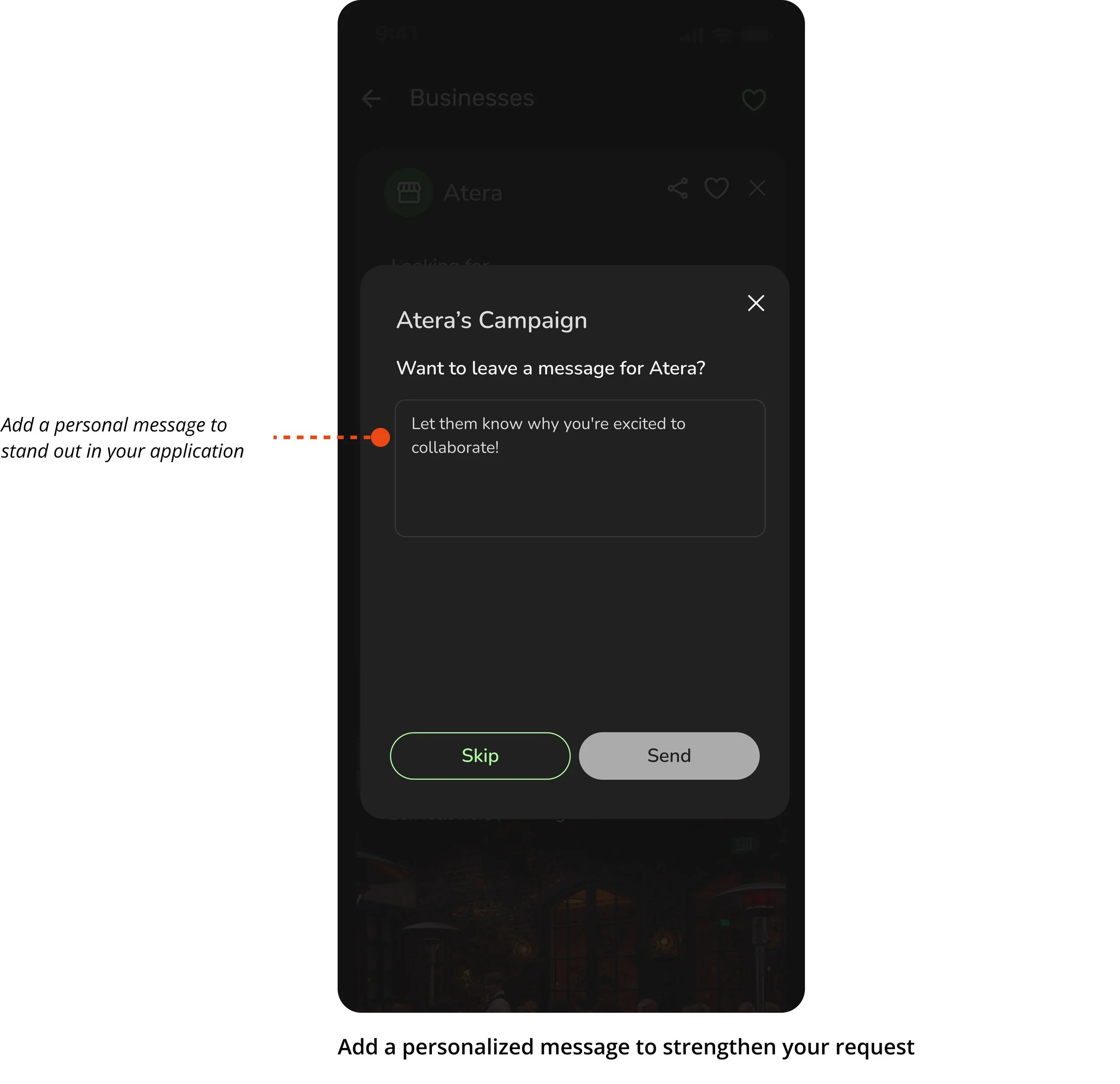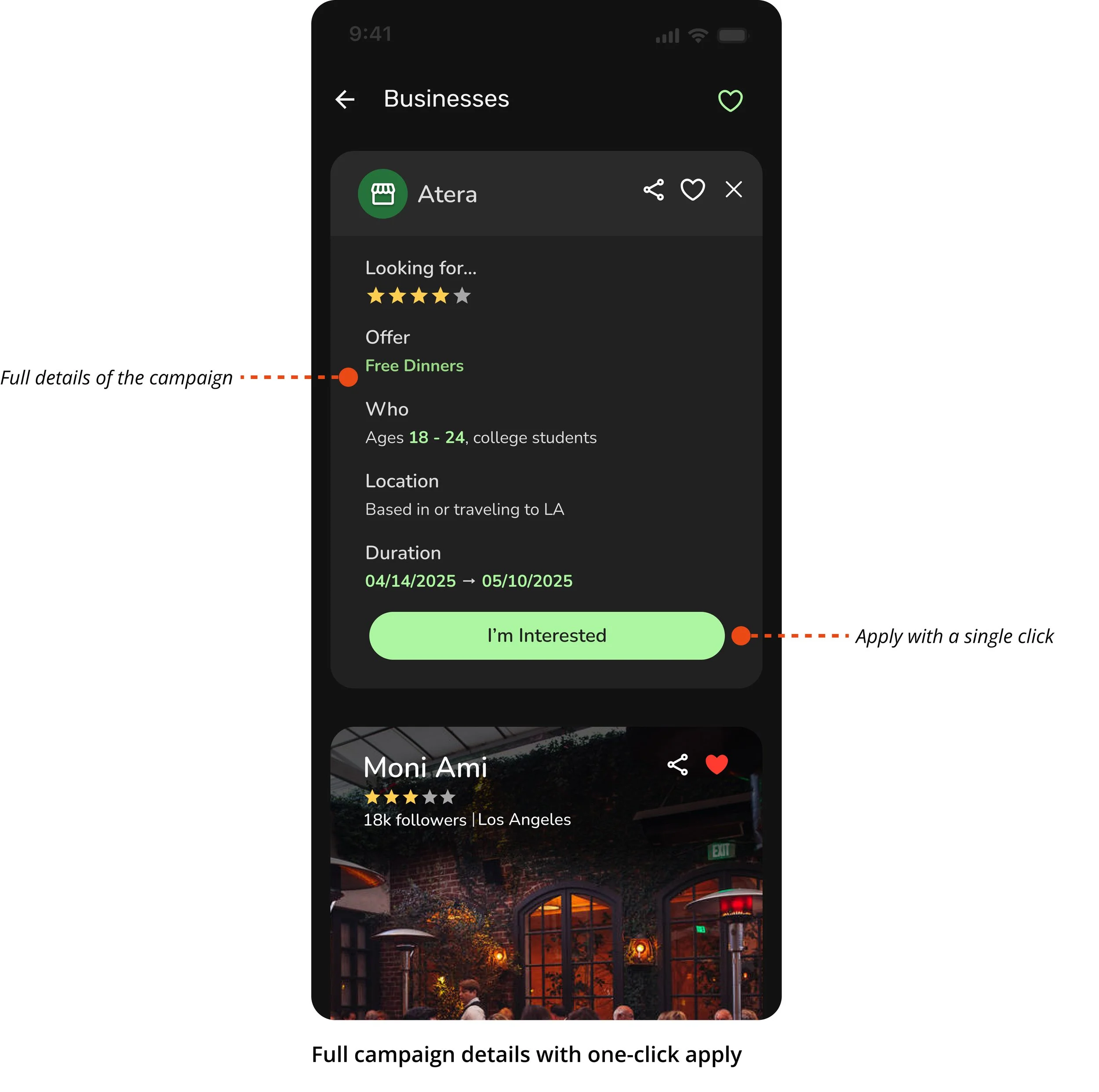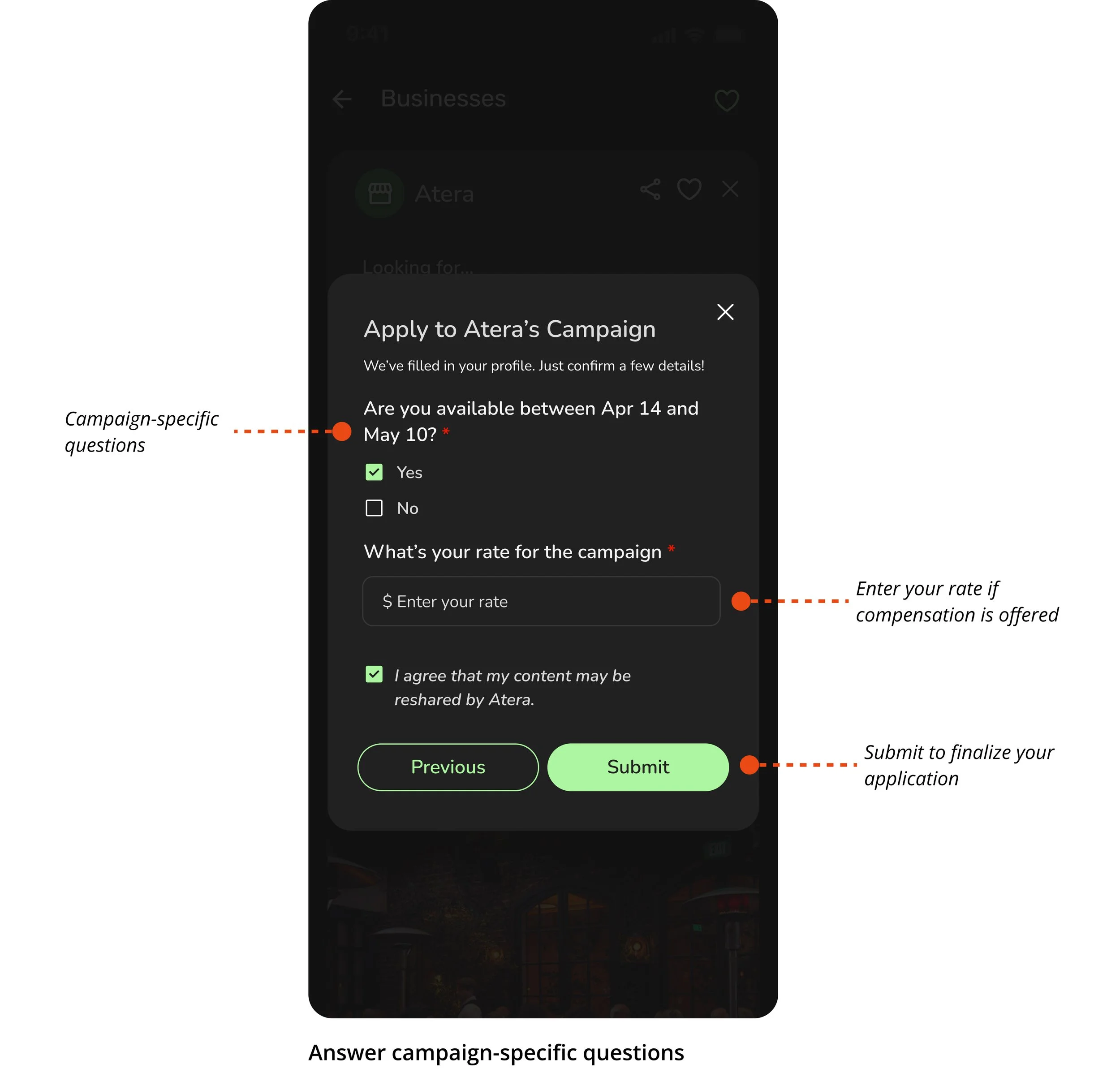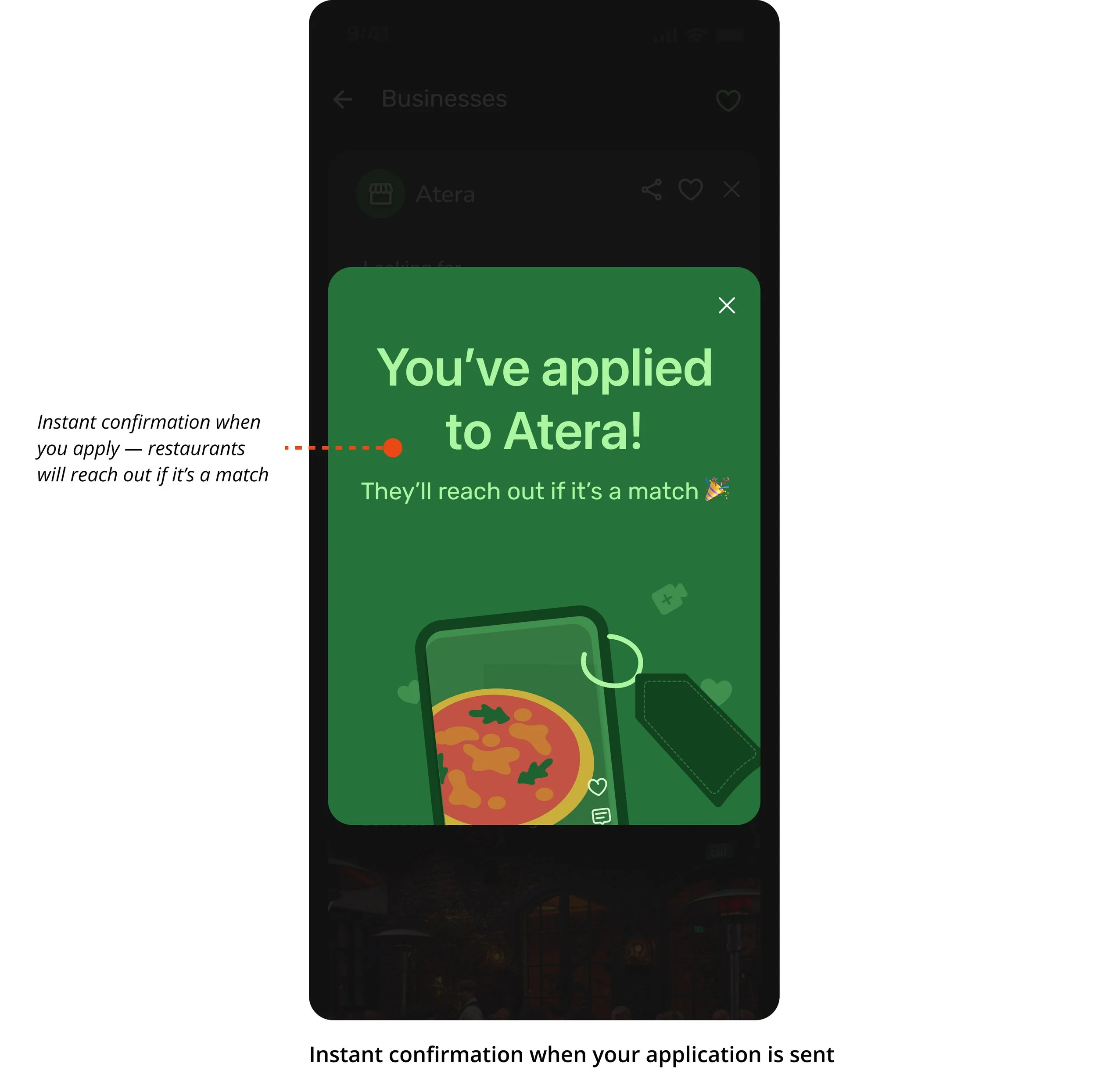Voodies Connect
From food discovery to creator collaborations.
Role
Product Design Intern (end-to-end ownership)
Timeline
May 2025 - Aug 2025
Summer Internship
Team
Engineering, UX Research, Leadership, Sales
Summary and Outcome
I joined Voodies as a Product Design Intern and was given full ownership of Voodies Connect. I led the feature from ideation to developer handoff, collaborating with UX Research and Sales to align design decisions with user needs and business goals.
Designed end-to-end flows for restaurants and creators, which were used in sales meetings with restaurant owners to demonstrate value.
Partnered with UX Research to run A/B tests and surveys, addressing key friction points in onboarding and collaboration.
Delivered final high-fidelity designs now in development.
What and Why?
Voodies is a social food platform built around swipe, taste, and review. It connects food lovers, creators, and restaurants through short, shareable videos.
However, while the videos sparked discovery, collaborations between restaurants and creators were happening outside the app through cold DMs, scattered emails, and unstructured conversations. This created three issues:
High friction: Starting a partnership required too many steps outside Voodies.
Lack of trust: Restaurants had limited context about creators before reaching out.
Low scalability: Without structure, partnerships could not grow with the platform.
The opportunity was clear: bring collaborations directly into Voodies with a feature that was simple, transparent, and trustworthy.
Solution
I designed Voodies Connect as the in-app collaboration layer. Restaurants could launch campaigns and discover creators, while creators could browse opportunities and connect with restaurants.
Two design principles guided the solution:
Reduce friction by streamlining onboarding and collaboration flows.
Increase trust by giving restaurants more context before connecting.
Final Designs
The high-fidelity designs bring the Voodies Connect experience to life — from onboarding and campaign creation to creator discovery and collaboration requests. These polished flows ensured that restaurants and creators could engage confidently, with clarity at every step.
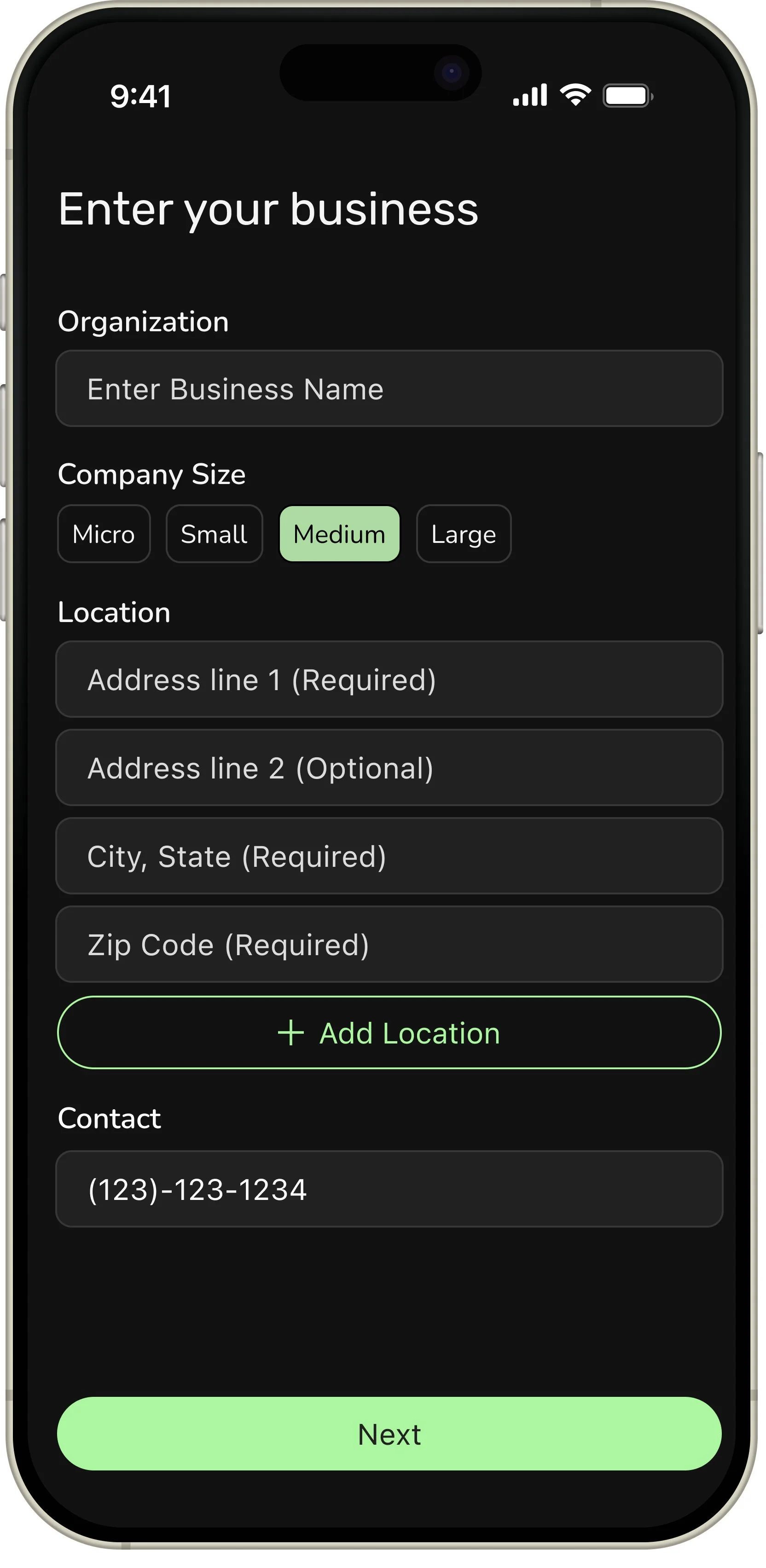
Restaurant onboarding
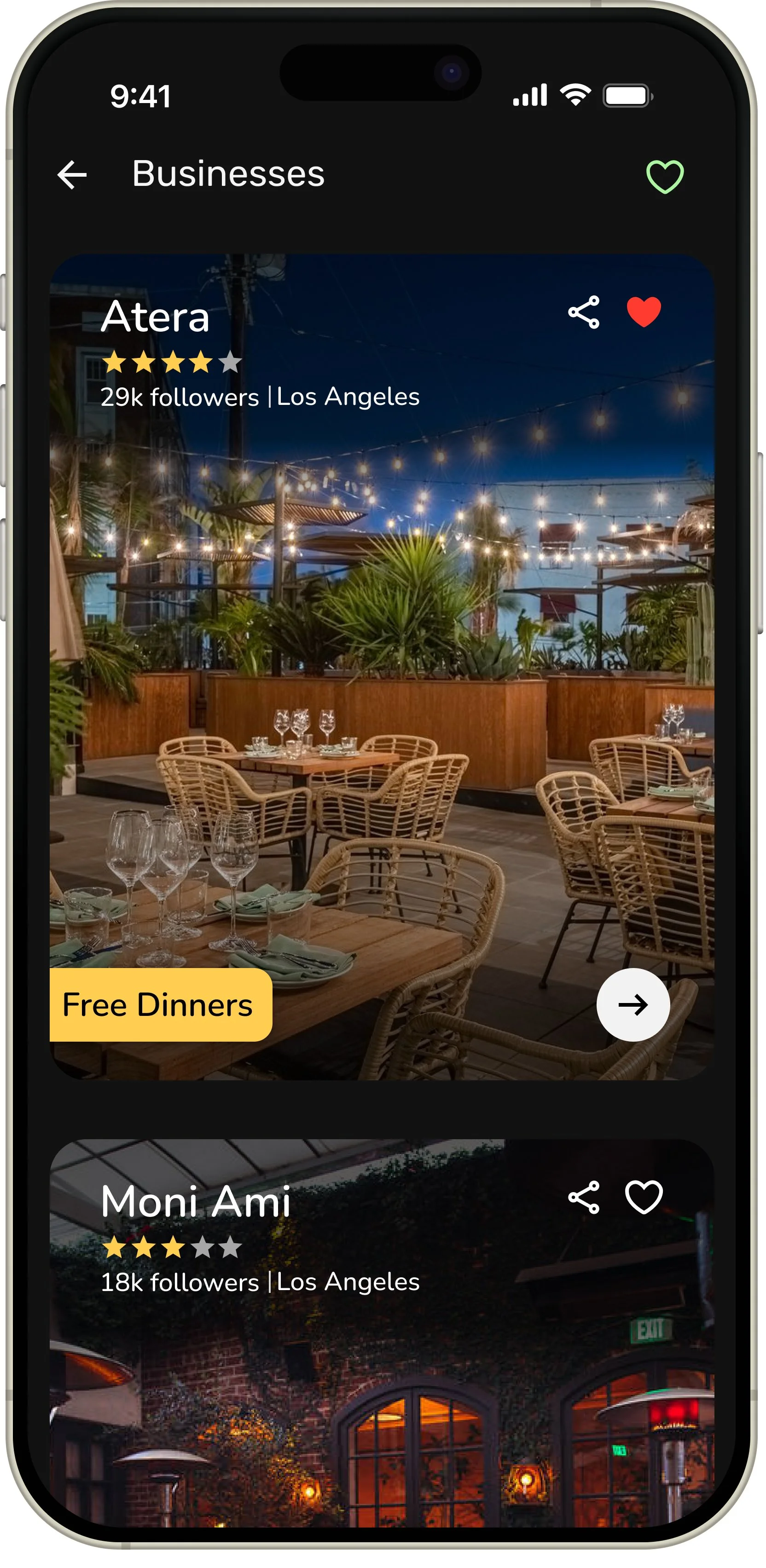
Campaign browsing
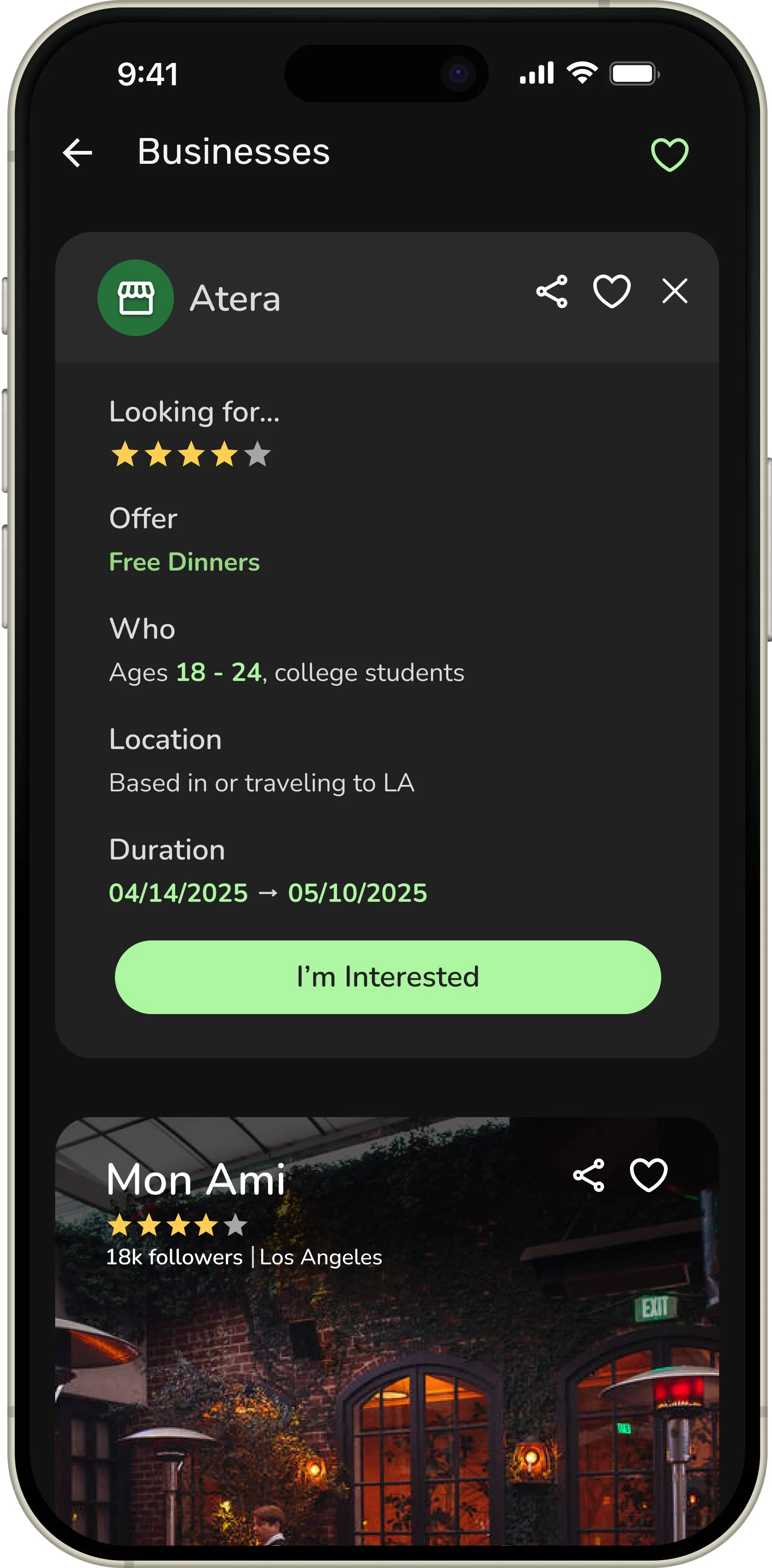
Campaign details
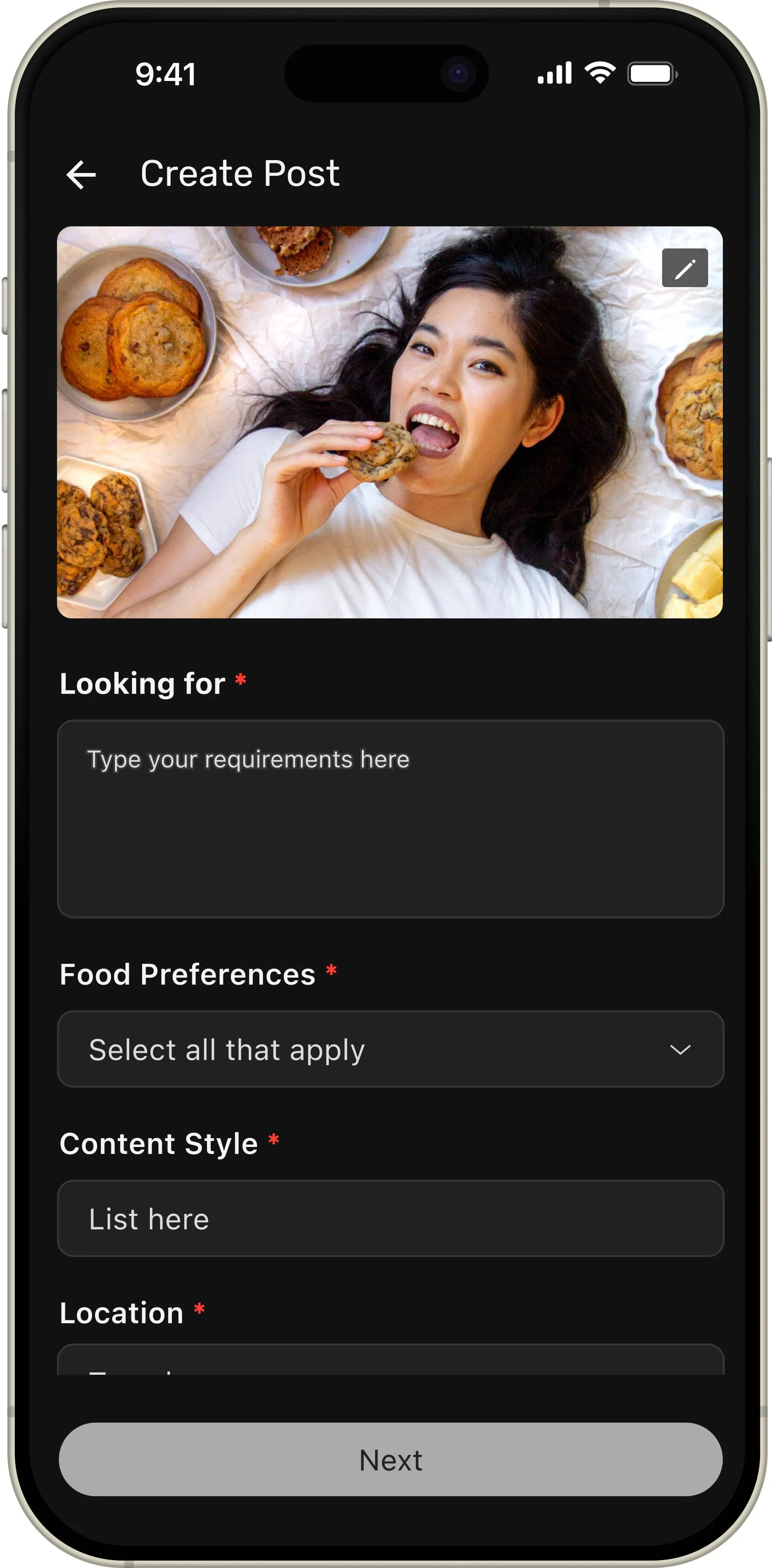
Creator profile creation
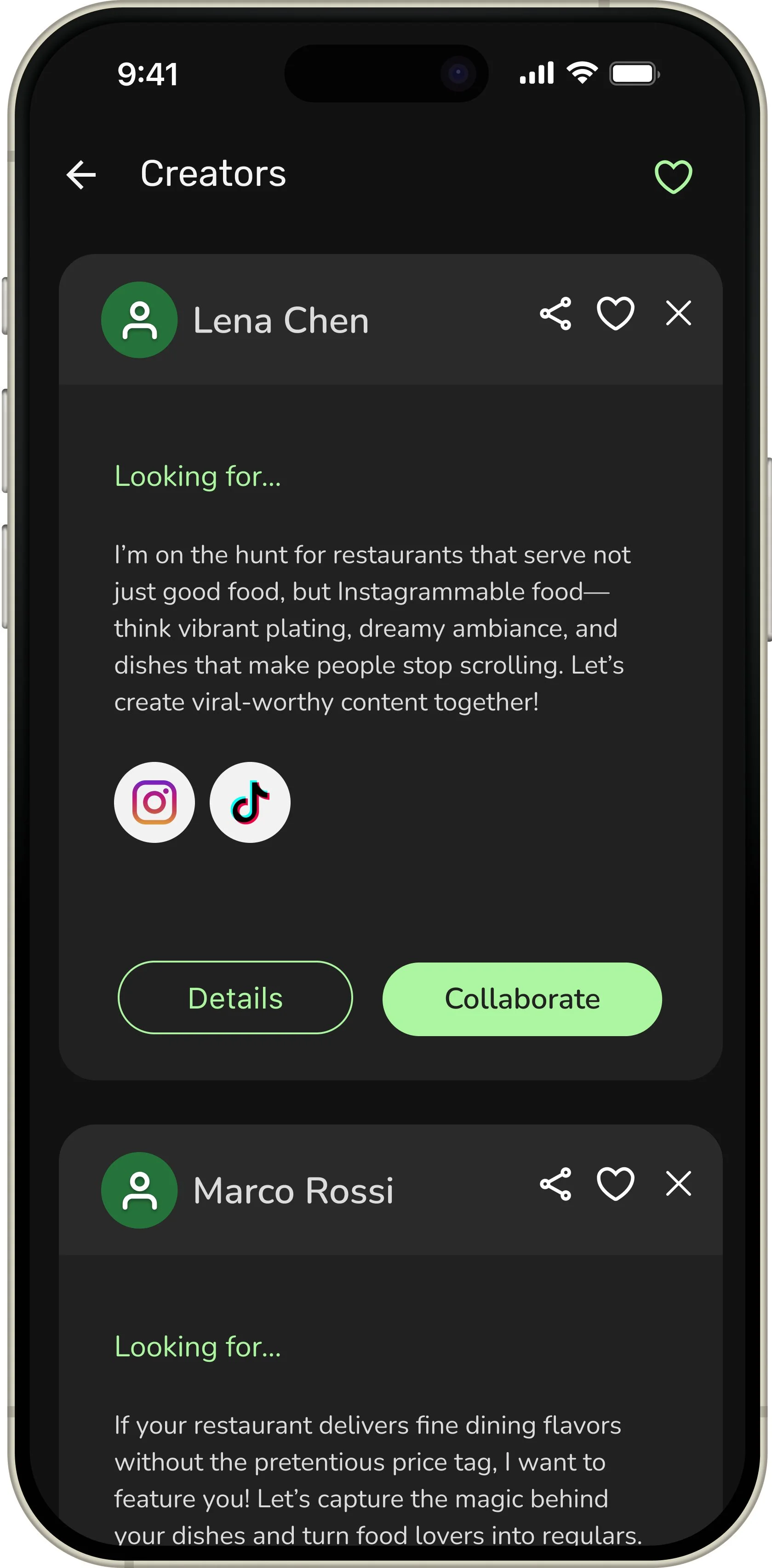
Creator overview
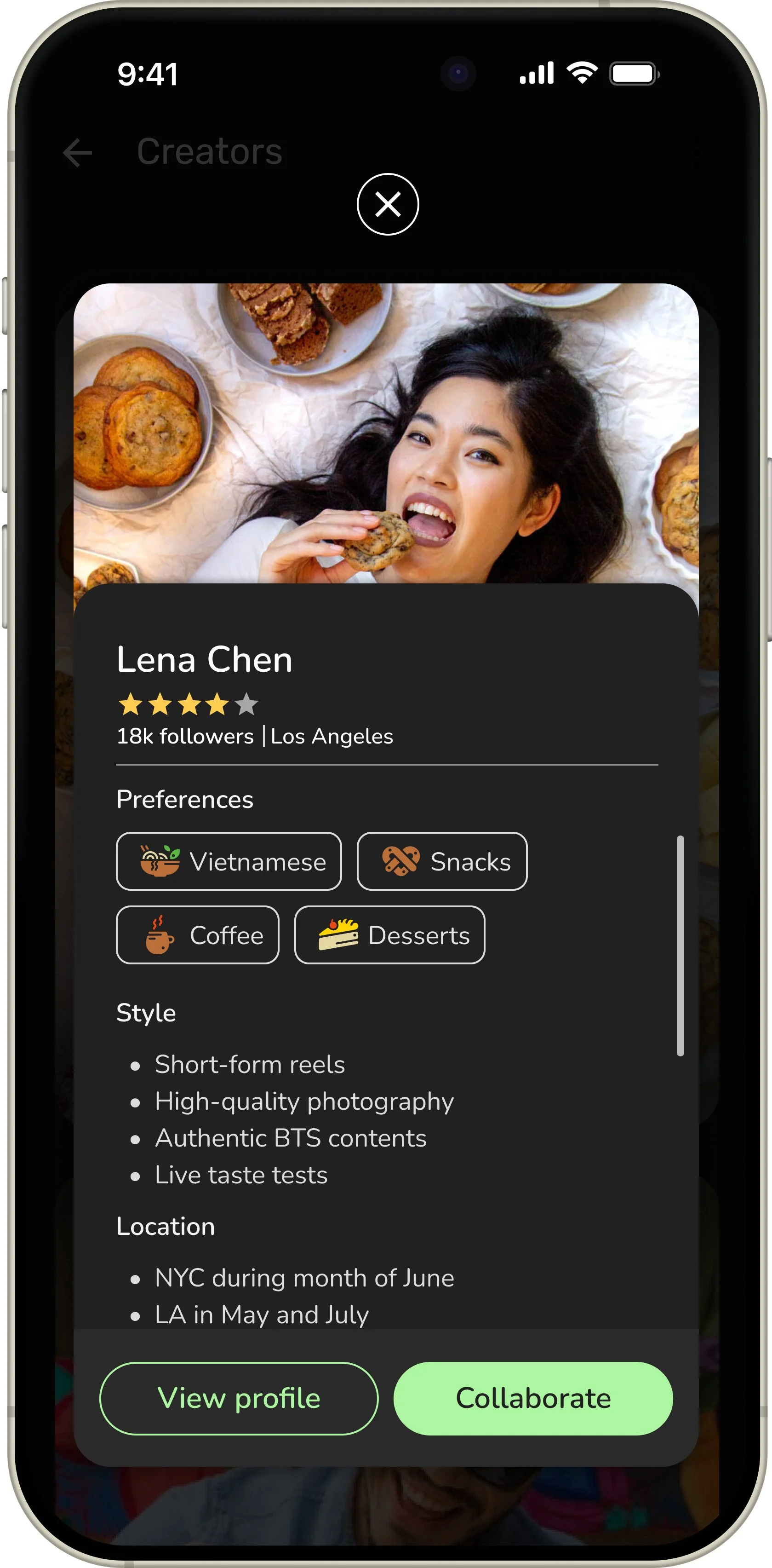
Creator details
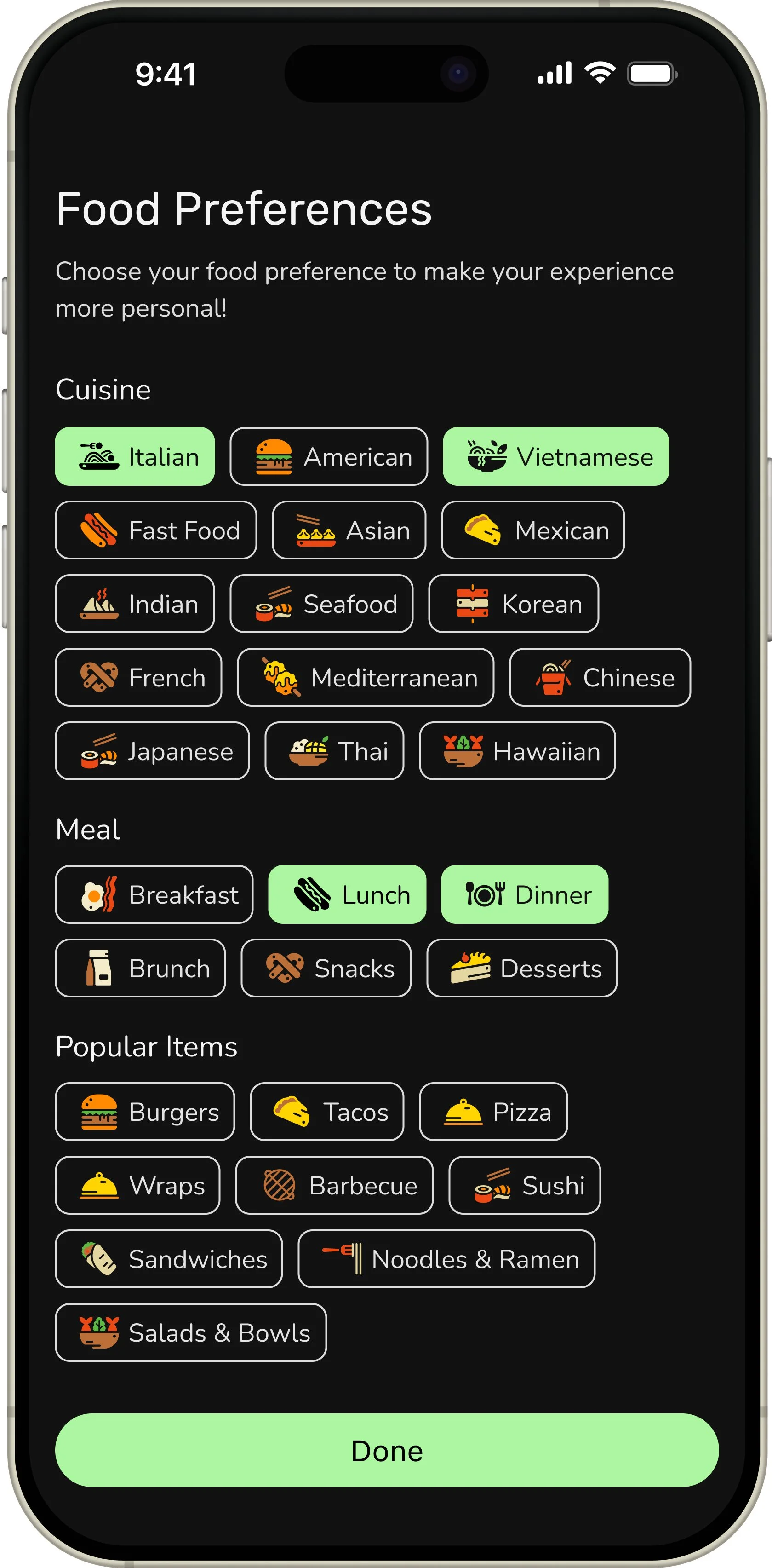
Creator food preferences
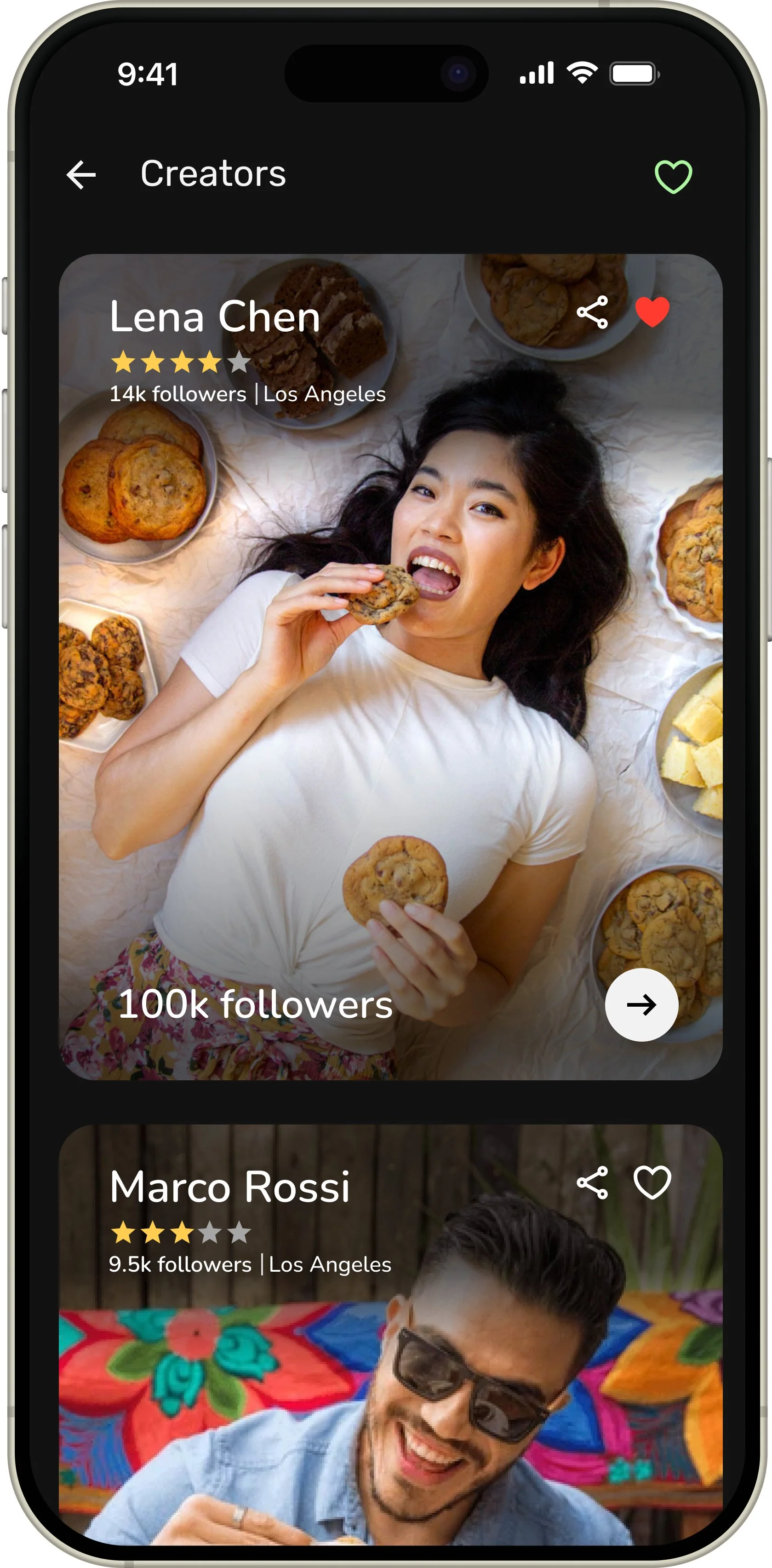
Creator discovery
Feature-wise Breakdown
The high-fidelity designs focused on making collaborations intuitive and reliable.
1) Campaign Creation for Restaurants
Restaurants can quickly set up a campaign by filling in only the essentials like the offer, location, and creator preferences. The preview feature lets them review how the campaign will appear before publishing, ensuring clarity and consistency.
2) Creator Discovery
Restaurants can discover creators through profile cards that show rating, follower count, and location upfront. Detailed profiles reveal preferences, content style, and availability, while external social links add credibility. Once the right fit is found, restaurants can send collaboration requests directly in-app with a personalized note, making the process both transparent and relationship-driven.
3) Campaign Discovery for Creators
Creators can easily browse campaigns from restaurants, each highlighting the offer, audience, and location upfront. This helps them quickly identify opportunities that align with their niche. The application flow is designed to minimize effort—profile details auto-fill into forms, with flexibility to edit fields as needed.
To make applications more personal, creators can also add a custom note, showing genuine interest and improving match quality. This balance of speed and personalization makes collaboration seamless and trustworthy for both sides.
Key Learnings & Takeaways
Balance between structure and flexibility: Restaurants preferred structured forms to avoid back-and-forth, while creators valued room for personal expression. Designing for both needs taught me how to strike the right balance.
Importance of trust in marketplaces: Adding social links, transparent ratings, and previews increased credibility. I learned that building trust is as critical as usability in two-sided platforms.
Designing for efficiency without losing personality: Auto-filled forms sped up applications, but personal notes made collaborations feel human. Small design details can keep efficiency from feeling transactional.
Iterating through feedback loops: Early usability tests revealed friction in onboarding and campaign posting. Iterating quickly based on real user input reinforced the value of lightweight prototyping.
Framing the bigger picture: Beyond just screens, this project showed me how design can act as the bridge in an ecosystem, connecting restaurants, creators, and food lovers into a sustainable loop.


